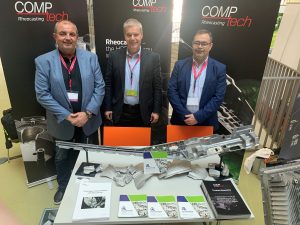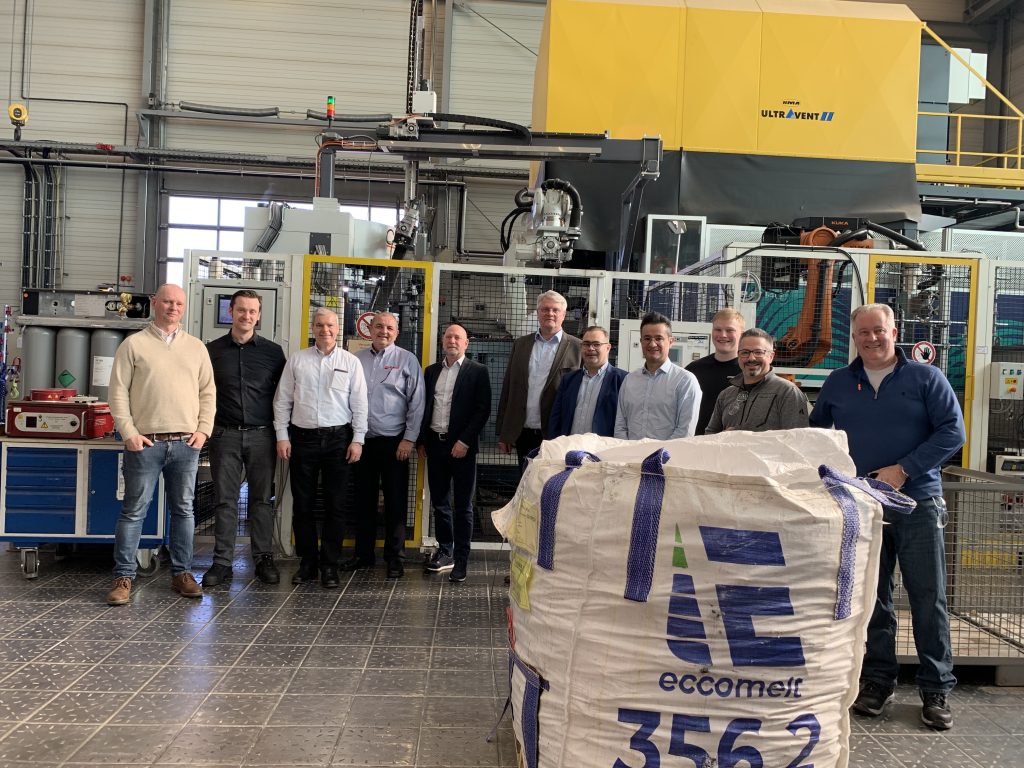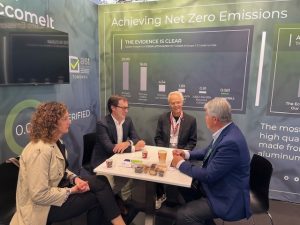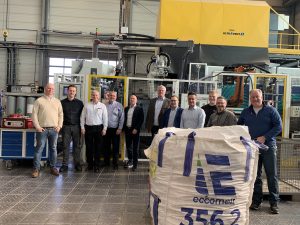On March 5-6, The Eccomelt team, represented by Tim Moses and Martin Hartlieb, attended the first Global Giga-Casting Congress at the University of Kassel, Germany. The congress was extremely well attended by over 400 participants from 215 companies. Most automotive OEMs, Tier1s and die casters active or interested in the field of large structural (Giga) castings were present. Eccomelt exhibited together with Comptech, the technology provider of the Rheocasting technology that is considered by many as a great opportunity to meet the technical challenges of ever growing castings and, through the direct use of eccomelt356.2, enables the production of structural castings with the lowest carbon footprint. The award winning Rivian hinge pillar casting, made with 100% Eccomelt using the Comptech Rheocasting process, is shown here at the booth and featured in one of the presentations at the congress, is evidence of this accomplishment.

Giga-Casting is currently revolutionizing the foundry and the car manufacturing industries, as these giant castings, primarily front and rear under body and battery tray, replace often more than a hundred stampings and sometimes also several extrusions and smaller castings, as well as the hundreds of robots necessary to weld those individual parts together. While the Chinese producers are currently leading this trend that was initially started by Tesla in 2019/2020, North American, European and other Asian manufacturers are now also investing heavily in those huge die casting machines. Initially Giga-Casting machines had around 6000 tons locking force, then 9000t, 12000, and today up to 16000 tons are available, and there are talks about die casting machines with 20000 tons locking force, capable of producing almost an entire car underbody. The savings OEMs reported by using these large castings are huge: Cost, complexity, floorspace, and the number of robots needed for assembly, can all be reduced significantly. The carbon footprint is however still a challenge as most of the structural castings so far are made mainly from primary aluminum alloys, while the sheet metal structures they replace have already a high recycling content. Most OEMs are putting a high priority on increasing recycling content and hence reducing carbon footprint of those castings. That’s where Eccomelt comes in.
The most used alloy for those parts is currently the AlSi7MnMg, which can easily be made from eccomelt356.2 (AlSi7Mg), and with the Rheocasting technology, eccomelt356.2 can be used directly with almost no adjustments at all. It is preferred over the traditional structural die casting alloy AlSi10MnMg (typically used in T7) due to its higher elongation in F temper and T5 (or simply after paint bake) and avoiding solution heat treatment on these giant castings is seen as critical in achieving the tight tolerance requirements. Achieving homogeneously high properties (without solution heat treatment) in such large castings is very challenging. As shown in presentations at the conference, structural Rheocastings made from eccomelt356.2 in T5 show excellent properties, but above all very homogeneous and repeatable properties that meet all requirements for Giga-castings. The GTK (Casting Technology Centre of the University of Kassel) offered tours to congress participants, where they could see the Rheocasting technology in action, as well as eccomelt356.2, which is available there for trials and R&D projects.




